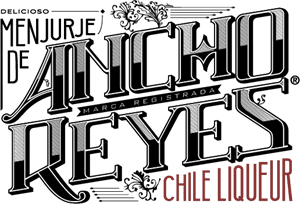

presents
La Luchadora
MMy job as a reporter is to travel around the world looking for stories. At the start of my career, my newspaper sent me to Mexico to write an article on lucha libre.
Mexican wrestling is often practiced in underground locations that are not easy to discover.
So, is there a better place than a bar counter to gather some information?
old city.
There I was at Cafè del Artista, the most popular café situated in a colourful neighbourhood called El Barrio del Artista. In my hand, my inseparable leather-bound notebook in which I write everything down.
It was a woman’s voice.
The woman serving drinks behind the counter.
She saw right through me.
I nodded.
“Try this,” – she said – “It’s our story. A story that starts from here in Puebla... it’s made with our poblanos, Puebla’s typical sun-dried chilli peppers.”
I took a little sip of that bronzey, syrupy beverage. That curious drink pleasantly surprised my palate: the intensity of the hot taste immediately followed by unexpected freshness, the noticeable aromas of cocoa and cinnamon and the sweet and sourish tamarind finale triggered sensations I had never felt before.
I took another sip. I confessed to her that I came to town for the lucha libre, but she seemed to ignore that part and showed me a bottle that was red like fire, reading
and the year 1927. She proudly continued her story.
“...We Mexicans are very fond of traditions. Everything is done manually: from the harvest of the chilli peppers to the labels on the bottles. But it’s a process that requires a lot of time. After the harvest, chilli peppers are sun-dried for about 20 days, then they are cut by hand and finally infused in sugar cane distillate with spices and flavourings for six months...”
While I was taking notes in my notebook, she told me that, now that I knew the story of their traditional hot drink, I was ready for another story, the one that I should write for my newspaper. With these words, the barista handed me a scribbled-on piece of paper: it showed only a time and an address.
The next day I ventured through the beating heart of Puebla, searching for the specific location shared by the woman. Walking along the alleys of the Barrio del Artista, I reached a place that displayed a portrait of La Luchadora, the wrestling idol of the neighbourhood.
I walked in. The match had started just a few minutes before.
Finally, I knew where matches took place and I felt immediately enraptured.
La Luchadora was fantastic in the boxing ring. Her brightly coloured mask was hiding part of her face. It was intriguing.
I worked my way through the cheering crowd to look at her closely. I could swear that, for a brief moment, she looked at me too.
It was possibly just my imagination, but I was almost certain that her dark deep eyes searched the whole crowd, finally stopping on me.
It was almost as if she hoped that she could see me there, cheering for her.
That evening, I went back to the Cafè del Artista.
The barista welcomed me like an old friend.
She smiled and we looked into each other’s eyes.
A grin on her face, her eyes weirdly glowing.
The same penetrating look of that woman that I had seen twirling in the ring a few hours before.
It was a revelation.
But she couldn’t really be La Luchadora.
Or could she?
The woman who was pouring me a drink and the masked heroine were the same person?
I could not shake that feeling.
“To your future as a reporter!” – she exclaimed, raising her glass brimming with the precious Mexican liqueur.
“...So, do you have all the information to write your piece now?”
At her back, hiding behind the Ancho Reyes bottle, something coloured and shining drew my attention: it was La Luchadora’s mask.
“Yes, and I couldn’t have asked for anything better...”
I raised my glass again for a new toast.
She did the same.





